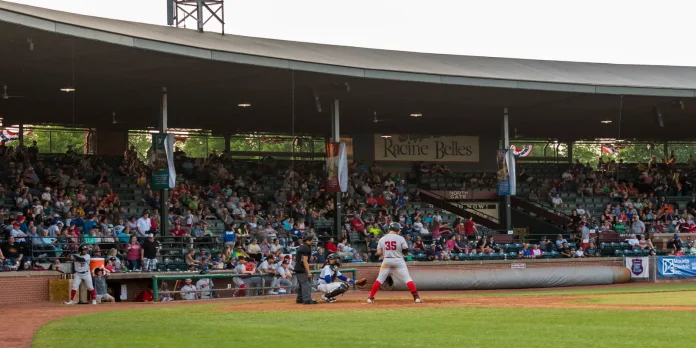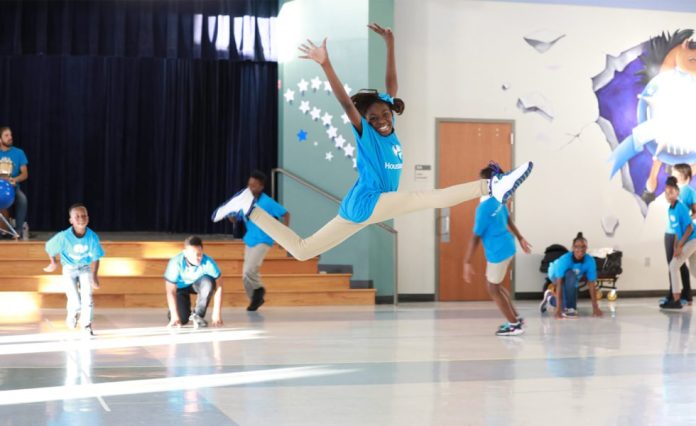Vanderburgh County Council Meeting & County Budget Hearings
Vanderburgh County Council Meeting & County Budget Hearings
City Council Meeting August 14, 2023
City Council Meeting August 14, 2023
5:30 P.M.
AGENDA
| I. | INTRODUCTION |
08-14-2023 Agenda Attachment:
| II. | APPROVAL OF MEETING MEMORANDUM |
| III. | REPORTS AND COMMUNICATIONS |
| IV. | SPECIAL ORDERS OF THE DAY |
| V. | CONSENT AGENDA:Â FIRST READING OF ORDINANCES AND RESOLUTIONS |
A. ORDINANCE G-2023-16 An Ordinance Amending Sections 2.10.070, 2.10.080, 2.10.100, 2.10.110, 2.108.050, 2.108.060, 2.208.060, 18.175.020 and 18.175.040 of the Evansville Municipal Code Sponsor(s): Heronemus Discussion Led By: ASD Chair Mosby Discussion Date: 8/28/2023 Notify: Josh Claybourn, Jackson Kelly G-2023-16 Attachment:
B. ORDINANCE G-2023-17 An Ordinance of the Common Council of the City of Evansville, Indiana, Appropriating the Proceeds of Bonds of the City of Evansville Redevelopment Authority, Including Investment Earnings Thereon, and Related Matters Sponsor(s): Beane Discussion Led By: Finance Chair Beane Discussion Date: 8/28/2023 Notify: Marco DeLucio, ZSWS G-2023-17 Attachment:
C. ORDINANCE R-2023-27 An Ordinance to Rezone Certain Real Estate in the City of Evansville, State of Indiana, More Commonly Known as 1821 Buchanan Rd Owner:Tim Smith Requested Change: M2 to R1 Ward: 6 Brinkmeyer Representative: Tim Smith R-2023-27 Attachment:
D. ORDINANCE R-2023-28 An Ordinance to Rezone Certain Real Estate in the City of Evansville, State of Indiana, More Commonly Known as 4407 & 4319 Broadway Ave Owner:Fasttrack Enterprises, LLC Requested Change: R1 & C1 to C4 w/ UDC Ward: 6 Brinkmeyer Representative: Scott Buedel, Cash Waggner & Associates, PC R-2023-28 Attachment:
| VI. | COMMITTEE REPORTS |
| VII. | REGULAR AGENDA:Â SECOND READING OF ORDINANCES AND RESOLUTIONS |
A. ORDINANCE F-2023-11 AMENDED An Ordinance of the Common Council of the City of Evansville Authorizing Transfers of Appropriations, Additional Appropriations and Repeal and Re-Appropriation of Funds for Various City Funds Sponsor(s): Beane Discussion Led By: Finance Chair Beane Discussion Date: 8/14/2023 Notify: Russ Lloyd, Jr., Controller F-2023-11 Amended Attachment:
| VIII. | RESOLUTION DOCKET |
A. RESOLUTION C-2023-15 A Confirmatory Resolution of the Evansville City Council Declaring an Economic Revitalization Area for Property Tax Phase-In for the Rehabilitation of Real Property and Installation of New Equipment 5818 Vogel Rd (KCG Development, LLC) Sponsor(s): Heronemus, Burton, Mosby Discussion Led By: President Heronemus Discussion Date: 8/14/2023 Notify: Bob Grewe, Evansville Regional Economic Partnership C-2023-15 Attachment:
B. RESOLUTION C-2023-16 A Confirmatory Resolution of the Evansville City Council Declaring an Economic Revitalization Area for Property Tax Phase-In for the Rehabilitation of Real Property and Installation of New Equipment 501 NW 3rd St (KCG Development, LLC) Sponsor(s): Heronemus, Burton, Mosby Discussion Led By: President Heronemus Discussion Date: 8/14/2023 Notify: Bob Grewe, Evansville Regional Economic Partnership C-2023-16 Attachment:
C. RESOLUTION C-2023-18 A Resolution of the Common Council of the City of Evansville, Indiana, Authorizing Affordable Housing Funds for the Development of Five (5) Newly Constructed Affordable Housing Units (Known as Memorial Villas Phase 8) by Memorial Community Development Corporation in the City of Evansville, Indiana in an Amount Not to Exceed Six Hundred and Seventy-Five Thousand Dollars ($675,000). Sponsor(s): Burton, Koehler Lindsey, Mosby Discussion Led By: President Heronemus Discussion Date: 8/14/2023 Notify: Kelley Coures, DMD C-2023-18 Attachment:
D. RESOLUTION C-2023-19 A Confirmatory Resolution of the Evansville City Council Declaring an Economic Revitalization Area for Property Tax Phase-In for the Installation of New Equipment 2301 St. George Rd (Fisher Dynamics, Inc) Sponsor(s): Heronemus, Mosby, Koehler Lindsey, Burton Discussion Led By: President Heronemus Discussion Date: 8/14/2023 Notify: Bob Grewe, Evansville Regional Economic Partnership C-2023-19 Attachment:
E. RESOLUTION C-2023-20 A Resolution in Support of the Ohio River Crossing Grant Funding Sponsor(s): Heronemus, Burton, Mosby, Trockman Discussion Led By: President Heronemus Discussion Date: 8/14/2023 Notify: Josh Claybourn, Jackson Kelly C-2023-20 Attachment:
F. RESOLUTION C-2023-21 A Resolution of the Common Council of the City of Evansville, Indiana, Approving a Lease Between the City of Evansville Redevelopment Authority and the City of Evansville Redevelopment Commission, and Addressing Other Matters Related Thereto Sponsor(s): Beane, Brinkmeyer, Weaver Discussion Led By: President Heronemus Discussion Date: 8/14/2023 Notify: Marco DeLucio, ZSWS C-2023-21 Attachment:
| IX. | MISCELLANEOUS BUSINESS |
A. THE NEXT MEETING of the Common Council will be Monday, August 28, 2023 at 5:30 p.m.
B. TAX PHASE IN COMPLIANCE REPORT; Robert Grewe, Evansville Regional Economic Partnership Tax Phase-In Compliance Report Attachment:
C. ADDITIONAL MISCELLANEOUS BUSINESS
| X. | COMMITTEE REPORTS |
A. City Council Budget Hearings will be held Tuesday, August 15th at 3:00 p.m. Time will also be allotted for Friday, August 18th at 2:00 p.m. if needed. Joint Department Hearings will be held Wednesday, August 16th at 3:00 p.m. All meetings will be held in Room 301. Public input will not be permitted at this time, but will be available at a later date. City Council will simply be receiving information from Department Heads.
| XI. | ADJOURNMENT |
 Anu Awarded a $200,000 Grant To Mass Manufacture Its Aeroponic Seed Pods
 Anu awarded a $200,000 grant to mass manufacture its aeroponic seed pods that grow produce in controlled environments
(Purdue alumni founders’ goal is for users to collectively become the largest farm in the world without owning any land)
AUGUST 13, 2023
EVANSVILLE, Ind. – A startup company founded by Purdue University alumni has received funding from the state of Indiana to advance the manufacture of its products.
Heliponix LLC, doing business as anu™ (previously gropod®), has received a $200,000 Indiana Manufacturing Readiness Grants (MRG) award to mass manufacture its aeroponic seed pod consumables.
Manufacturing Readiness Grants are provided by the Indiana Economic Development Corp. (IEDC) and administered by Conexus Indiana and the Next Level Manufacturing Institute. They are available to Indiana manufacturers willing to make capital investments to integrate smart technologies and processes that improve capacity, productivity and competitiveness. Launched in 2020, the MRG program has supported tech-enabled investment in smart manufacturing all around the state.
Anu, founded by Purdue Polytechnic Institute alumni Scott Massey and Ivan Ball, sells a smart garden appliance. The small, fully automated, in-home greenhouse grows daily servings of produce from subscription seed pods.
Aeroponics is a form of hydroponics, or growing plants without soil. Massey said the pods empower consumers to grow fresh, high-quality produce including most leafy green vegetables, culinary herbs, ornamental/flowering plants, and an increasing number of fruiting plant varieties such as peppers, tomatoes and more in a controlled environment.
“Our cultivation chambers use deep-learning, computer-vision algorithms to produce higher yields than other controlled environment agriculture technology,†Massey said. “The chambers consume less energy and more than 95 percent less water than conventional field farming. With zero use of pesticides or preservatives, they represent an environmentally friendly solution for year-round accelerated growing.â€
Massey said the funding will allow anu to scale a sustainable platform for consumers by supplying growers with recurring seed pod subscriptions.
“This funding has dramatically increased our ability to manufacture these seed pods, but in a volume that will quickly outpace the collective yields of the largest farms in the world,†Massey said. “It further accelerates our pursuit to collectively become the largest farm in the world without owning any land.â€
Mitch Landess, vice president of innovation and digital transformation at Conexus Indiana, said manufacturing entrepreneurship, especially when it involves technology, is vital for Indiana.
“Small firms founded and led by entrepreneurs that leverage the resources around them and form credible partnerships are interesting to the Manufacturing Readiness Grants program,†Landess said. “The mix of intellectual property, local venture capital, Small Business Innovation Research funding and participation of larger manufacturing partners made it easy to support anu’s investment in production technology.â€
Conexus Indiana recently named Massey to the Conexus Indiana Rising 30 Class of 2023, which recognizes distinguished advanced manufacturing and logistics professionals under the age of 30.
Massey said he and his colleagues at anu appreciate support from Conexus for the Rising 30 recognition and from the IEDC for the $200,000 Manufacturing Readiness Grants award.
“It was only a few years ago that I was a Purdue University student with an idea and the drive to bring it to the market, to empower everyone to grow their own produce. Conexus has done a phenomenal job extending these resources and recognition to make this idea a reality as we continue growing our highly experienced team, creating jobs and attracting more talent to the great state of Indiana,†Massey said.Â
“Indiana’s support for small businesses is not just unparalleled, but Indiana’s long-standing history of advanced manufacturing has resulted in it being the best possible headquarter base for us.â€
Anu received a $100,000 investment from the Ag-Celerator Fund co-founded by the Purdue Research Foundation and Purdue’s College of Agriculture. It also has received Phase I and Phase II SBIR grants from the National Science Foundation and matching funds from Elevate Ventures.
About Purdue University
Purdue University is a public research institution with excellence at scale. Ranked among top 10 public universities (Times Higher Education/Wall Street Journal and QS), with two colleges in the top 4 in the United States (U.S. News & World Report), Purdue discovers and disseminates knowledge with a quality and at a scale second to none. More than 105,000 students study at Purdue across modalities and locations, with 50,000 in person on the West Lafayette campus. Committed to affordability and accessibility, Purdue’s main campus has frozen tuition 12 years in a row. See how Purdue never stops in the persistent pursuit of the next giant leap, including its first comprehensive urban campus in Indianapolis, the new Mitchell E. Daniels, Jr. School of Business, and Purdue Innovates, at https://stories.purdue.edu.
Writer/Media contact: Steve Martin, sgmartin@prf.orgÂ
Source: Scott Massey, scott@growanu.comÂ
IMAGE OR VIDEO: Scott Massey, founder and CEO at anu, holds a sunflower cultivated in one of the company’s seed pods. The company has received a $200,000 Indiana Manufacturing Readiness Grants award to mass manufacture its aeroponic seed pod consumables. The grants are provided by the Indiana Economic Development Corp. and administered by Conexus Indiana and the Next Level Manufacturing Institute. (Photo/Indiana Economic Development Corp.)
https://www.purdue.edu/uns/images/2023/massey-anugrantLO.jpgÂ
Wild Things rally to down Otters
Washington plated five runs in the sixth inning to erase a four run Otters’ lead.
A single and walk started the sixth inning for the Wild Things with a double then plating the first run. A hit by pitch walked in another run to cut Evansville’s lead to 5-3. The Otters were an out away from escaping the inning but Washington hit a bases clearing double to go ahead 6-5.
Evansville mounted five runs on 11 total hits on Saturday. The Otters tied the game at one in the third inning. Gary Mattis led off with a base hit, Noah Myers doubled and a groundout scored Mattis.
The Otters took the lead in the fourth inning, plating three runs. Jomar Reyes led off with a single. A walk and hit-by-pitch loaded the bases.
Bryan Rosario poked a ball into centerfield scoring two on a single. The third run of the inning scored on a wild pitch.
Kona Quiggle tripled to lead off the fifth inning and Reyes notched an RBI hit to extend the Otters’ lead to 6-2.
After taking the lead, the Wild Things scored three more runs in the seventh inning for insurance.
Braden Scott received the loss despite an incredible start, allowing just two base runners in the first five innings. He finished the game with 10 strikeouts across 5.1 innings.
Reyes led the Otters’ offense with three hits. He’s totaled seven hits through the first two games of the series. Quiggle and Myers added multi-hit days to Evansville’s offensive attack.
All nine Evansville starting batters reached base. The Otters stranded 10 runners on base.
The Otters face the Wild Things in the series finale on Sunday afternoon with a 12:35 PM CT first pitch from Bosse Field. A Dog Days of Summer game means discounted hot dogs with fans encouraged to bring their dogs.
All home and road Otters games this season are televised on FloSports with audio-only coverage available for free on the Evansville Otters YouTube page.
The Evansville Otters are the 2006 and 2016 Frontier League champions.
This Week in Indiana History
August 13 – August 19This Week in Indiana History
|
||||||||||||||||||||||
Indiana Quick Quiz1. Where in Indiana can you go on a winter toboggan ride? 2. Where in Indiana can you visit a 400 acre home to an American Bison herd? 3. Where in Indiana can you visit the first goldfish farm in the United States? 4. How many State Parks and Reservoirs can you find in Indiana? Answers Below
Did You Know???The Indiana Statehouse Tour Office is hiring intermittent tour guides? Click link below to apply. https://workforindiana.in.gov/
Answers1. Pokagon State Park, Steuben County 2. Wild Winds Buffalo Preserve in Fremont 3. Ozark’s Fish Farm in Martinsville 4. 33
|
More Arts = More Benefits for Kids
​​​​Author: Jenna Doleh
A recent study brings good news about arts education: it can boost students’ writing skills, build social and emotional skills, and increase school engagement. But the same study warns that arts learning has been deprioritized in K-12 education since the 1980s, as schools have shifted tight budgets to align instruction with standardized testing. Additionally, few studies exist that demonstrate that the arts in schools are a beneficial investment.
This study is the first large-scale, randomized controlled trial of a city’s collective efforts to restore arts education in schools through community partnerships and investments. It examined the impact of participation in Houston’s Arts Access Initiative, a coalition of more than 50 cultural institutions, philanthropies, and other local organizations dedicated to providing more arts resources to schools that lack them. Brian Kisida, assistant professor in the Truman School of Public Affairs at the University of Missouri, and Daniel Bowen, a professor of educational administration at Texas A&M, worked with the district to follow two groups of schools randomly selected to either participate in the initiative or act as a control group–a total of more than 15,000 children from grades three to eight.
The arts experiences included theater, dance, music, and visual arts and were provided through teaching-artist residencies, in-school professional artist performances and workshops, field trips, and out-of-school-time art programs. Compared with the control group, the schools with extra arts experiences saw improvements in student behavior and increases in standardized writing achievement scores. The researchers also conducted surveys that showed an increase in students’ compassion for others, higher engagement in school, and stronger college aspirations.
Kisida and Bowen, who together co-direct the Arts, Humanities, and Civic EngagementLab supported by the National Endowment for the Arts, also studied arts education in Boston. They found similar results, including consistent positive effects on student attendance, and higher parent and student school engagement.
We caught up with them to talk more about the benefits of arts education for students, important policy considerations for retaining arts education, and more.
The Wallace Foundation:Â Can you talk about the importance of school-community partnerships? How can approaching arts education from a systems perspective help improve access to/remove barriers to arts education?
Brian Kisida: To begin with, many under-resourced schools can leverage school-community partnerships to supplement arts education experiences and reverse the declines we’ve seen with access to the arts. But there are larger systemic benefits from these approaches. By making education a community endeavor that brings together educators, artists, nonprofits, philanthropies, and researchers, education becomes a more collaborative experience that strengthens a community’s involvement and commitment to education.
Dan Bowen: In Houston, we have seen how these partnerships can promote systemic change in addition to increasing students’ arts learning opportunities. Despite the concern that these partnerships become substitutes for system-wide commitments and resources, we have seen how they can promote and complement these efforts.
WF: According to your research, the academic performance of students in math, reading, and science was no different for those who got more art than those who didn’t get access to extra art. Is this a bad thing? Why or why not?
BK: Unfortunately, there have been many claims made by arts advocates that increased involvement in the arts can boost test scores in other subjects, but these claims have not been supported by rigorous evidence. In our study, we didn’t expect to find gains in test scores, and we don’t think it’s a bad thing that we didn’t. In fact, arts advocates and education policymakers should consider that finding no effect on test scores is actually a win for the arts. Consider that school administrators often shift resources away from the arts in order to divert more resources to tested subjects, with the belief that doing so would boost test scores. If this were true, we would have expected the schools in our control group to outperform the treatment group on tested outcomes. The fact that there is no difference on test scores, yet the arts are producing meaningful impacts on other measures of behavior and social-emotional development, suggest that schools that cut the arts are missing out on these benefits without experiencing gains in test scores.
WF:Â Why do you think there were positive outcomes on writing test scores but not on math, science, and reading test scores?
BK: The arts programs that many of the students were involved in provided many opportunities for students to learn how to express themselves, to present a point of view, and form their own perspectives. Some of the programs even involved writing components that tied to arts experiences. When we disaggregate the writing score gains made by the treatment group into the two components measured by the state’s writing test–multiple choice items on mechanical skills and open-response expository essays–we find significant increases for treatment group students on both sections, but effects are greater in magnitude and significance for the written composition portion of the exam. This aligns with our expectations given the focus of arts programs on students’ self-expression skills.
WF:Â You saw similar positive outcomes with your study in Boston. To what extent do you think these results would replicate in other cities? Do you have advice for other communities that want to mimic the Houston Arts Access Initiative?
DB: Finding similar results in Boston was very encouraging and gives us hope that these findings would be similar with other cities. One concern might be that Houston and Boston are large metropolitan areas with abundances of arts resources, and we would not find the same results in smaller or less arts-rich locations. We definitely think it will be important to further investigate the question of how these contexts affect impacts. However, from our experiences, we often find that even smaller, more rural parts of the U.S. tend to have untapped arts resources that are potentially ripe for school partnerships. We find that these partnerships produce meaningful, sustained learning opportunities when schools regularly engage with artists and arts organizations to identify respective needs and resources. Â
WF:Â How can this study help school and district leaders make the case for adding more arts experiences for students in schools? How can this study inform public policy decisions?
BK: Education policymakers are increasingly interested in providing a well-rounded educational experience that produces benefits beyond test scores. Student attendance, behavior, engagement, and social-emotional development are increasingly viewed as important outcomes, and related research finds that these skills are incredibly important for success later in life. But few interventions have demonstrated the ability to move the needle on these outcomes. The arts seem well-poised to play a critical role in providing the kinds of engaging educational experiences that can move the needle on these outcomes.
WF:Â Why is it so important to study the relationship between arts learning and educational outcomes? What do you hope to find out in future studies?
DB: We don’t personally need to be convinced of the intrinsic benefits of the arts. However, policymaking works best when it is guided by evidence, and research on the benefits of arts education has been regrettably limited compared to other education topics. We hope our ongoing and future studies will shed further light on the value of the arts in promoting human development and social and emotional well-being.Â



















